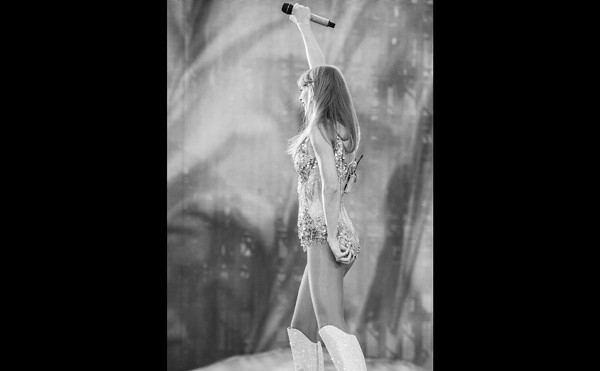Artists have long had an interest in serial imagery — repeatedly painting or making prints of such objects as haystacks (Monet), numerals (Jasper Johns) or flowers (Warhol). For the artist, it isn’t a rote, repetitious action — seeing how color, light or perspective changes the way you see an object makes one artwork as different from another as, well, night and day.
Appreciating that demands something special of the viewer. You can’t just adopt a “seen one, seen them all” attitude; you have to look hard and think about what the object means to the artist — and to you. It’s a way to slow down the art-viewing experience and make it matter more.
I had a rewarding time doing that at Peter Halley’s Print & Editions: 25 Years show at the Carl Solway Gallery, helped immensely by his presence opening night to share his insights. This fine, intriguing and thought-provoking show is up through Dec. 21 — try to see it.
Halley, 60, is a New York-born artist and former director of graduate studies in painting and printmaking at Yale University School of Art. His work at Solway — paintings and prints, primarily, with several three-dimensional pieces — can be taken as abstracts and/or geometric painting. In some cases, they have a Pop-influenced cartoon quality.
They at first look like exercises in art-making without a lot of consideration of the symbolic or social meaning of what is being depicted. After all, the object most often shown is a “cell” — really an undefined solid-color rectangle, sometimes with a “smokestack” sticking up from the top.
But not so fast. Those cells are often in the process of exploding. In the show’s signature work, a set of nine silkscreen-on-paper prints from 1994 called “Exploding Cell,” Halley takes us through the whole process of how matter becomes nothingness. He lays it out in the panels like a wordless graphic novel. The cell slowly becomes fire-engine-red hot and then blows up, expanding outward in a huge burst before collapsing into thick clouds, a dust pile and, finally, just short black, horizontal lines across a gray background. Dead air.
Whatever exactly is occurring in this piece is being repeated in his other work. In the show’s largest “Explosion,” a 2008 wall installation of 21 digital prints on canvas, Halley captures that explosion’s kablooey power again and again in different colors. It’s remarkably vibrant in a fun way, like a Lichtenstein painting with a big “POW!” on it. But if you think about what it really depicts, you can almost feel the ground shake from its destructive power.
On opening night, Halley explained his preoccupation. “The explosion is an important icon for the 20th-21st century,” he said. “You have the atomic explosion, Sept. 11. It lives on in our consciousness all the time. This either has a connotation of a bomb, or sometimes something a little more positive.” (We’ll get to that “something a little more positive” in a bit.)
Understandably, one can see what the attraction of the explosion is for Halley. There’s enough power — literally — in an explosion to repeat its depiction over and over.
But what is the cell? Is it a conceptual energy cell, something chemical in the atmosphere just waiting to ignite? If so, it looks like a Monopoly board house. In a book about Halley, he is quoted as saying in 1982 that the cell is a “reminder of the apartment house, the hospital bed, the school desk — isolated end points of industrial structure.”
So is this cell, then, meant as a political statement — we live in cells of our own making? Several of Halley’s other pieces in the show actually have “prison” in their name.
It’s not easy to figure out, and maybe there is no single answer. But it’s definitely worth spending time on it. Overall, the rigorous attention Halley pays to the consistency of his themes and images makes his work all the more worth contemplating.
About that “something more positive” statement Halley made on opening night. He explained that it’s not a given that all will respond to the explosions rendered in his work as a bad thing. At New York University, where he is working on a mural, students have said they interpret that image as a good thing — a way to make visual, and thus concrete, the abstract notion that an explosion of knowledge comes with a college education.
If only that was the way the whole world thought of explosions.
For more information, visit solwaygallery.com.
CONTACT STEVEN ROSEN: [email protected]





